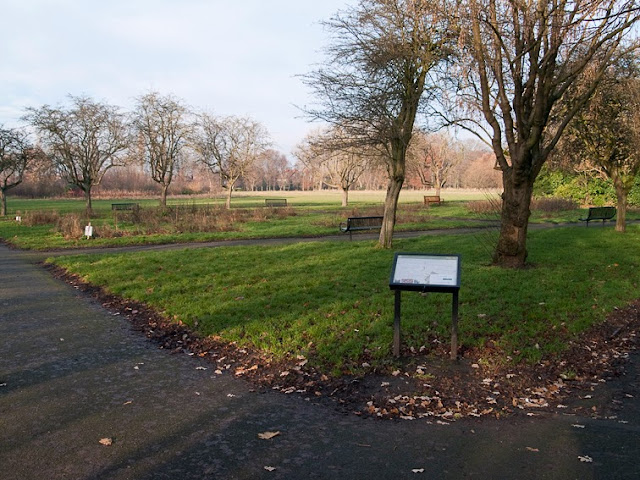If you are a gardener you have to deal with the passage of time.
Mostly it is experienced as a positive force as you see seedlings germinate and shrubs fill bald gaps in borders. Other times it forces us to make sad decisions - unfortunately Garden65 has had to lose two trees. One was a spruce that had finally reached the overhead telephone lines, and the other was a silver birch that was flirting with a neighbour's satellite dish. They were lovely characterful trees but the worry that we might get sued by angry telephone or Sky users meant they had to go.
On the plus side it's given us the opportunity to learn something about tree rings. Whoopee.
If you count the rings of the spruce tree it looks like it was 11 years old. Which means it originally germinated in 2002.
Below is a picture of the front garden in 2004 when I think I first planted it. Goodness, how small all the plants are. It's a jungle out there now. Perhaps they should all be lopped down.
So, let's whip through tree rings ...
A yearly ring is made of two distinct rings. A large, pale one, called the
earlywood, grew in the spring and early summer when growing conditions were good. As growth slowed and less nutrients reached the plant cells a dark, dense ring formed called the
latewood.
Over time, as the rings accumulate, the inner ones become less biologically active and turn into what is called the heartwood. The outer rings that still take part in the growth of the tree are called the sapwood.
The heartwood appears as a dark inner area, but I don't think you can see that in my tree. I wonder if that's because it is still young and all its wood is sapwood, or perhaps being a softwood tree it doesn't develop a heartwood.
Whatever the answer it just shows Nature doesn't always do what Wikipedia says it should.
The part of the tree we would call the wood, made of the heartwood and sapwood, is more scientifically termed the
xylem. It seems all vascular plants have an inner xylem. This is the part of the plant that transports water and nutrients upwards to the leaves and flowers etc.
The sugars made by photosynthesis in the leaves is transported downwards by the
phloem. In trees, the phloem is the innermost layer of the bark.
So, let's get this clear:
xylem = water + nutrients = upwards
phloem = sugar = downwards
 |
| Closer look at the cambrium |
Back to the tree as a whole - a tree grows in two directions: outwards in the form of leaves, twigs and root tips, and inwards (or rather outwards) as its xylem increases inside the tree trunk.
Just inside the bark is an area called the
cambrium where nonspecialist cells develop into either bark-side outer phloem cells or inner woody xylem cells. It is this inner growing of xylem cells that expands the trunk outwards.
Which, if you strip away all the scientific names, I think is a beautiful outcome of the magical dance between space and time.
As a random addendum to this musing on time and science and wonder here is Brian Cox in 'Wonders of Life'. What do you think?
"Go outside, now, and look at any randomly selected piece of your world. It could be a scruffy corner of your garden, or even a clump of grass forcing its way through a concrete pavement. It is unique. Encoded deep in the biology of every cell in every blade of grass, in every insect’s wing, in every bacterium cell, is the history of the third planet from the Sun in a Solar System making its way lethargically around a galaxy called the Milky Way. Its shape, form, function, color, smell, taste, molecular structure, arrangement of atoms, sequence of bases, and possibilities for a future are all absolutely unique. There is nowhere else in the observable Universe where you will see precisely that little clump of emergent, living complexity. It is wonderful. And the reason that thought occurred to me is not because some guru told me that the world is wonderful. It is because Darwin, and generations of scientists before and after, have shown it to be."







.png)













































